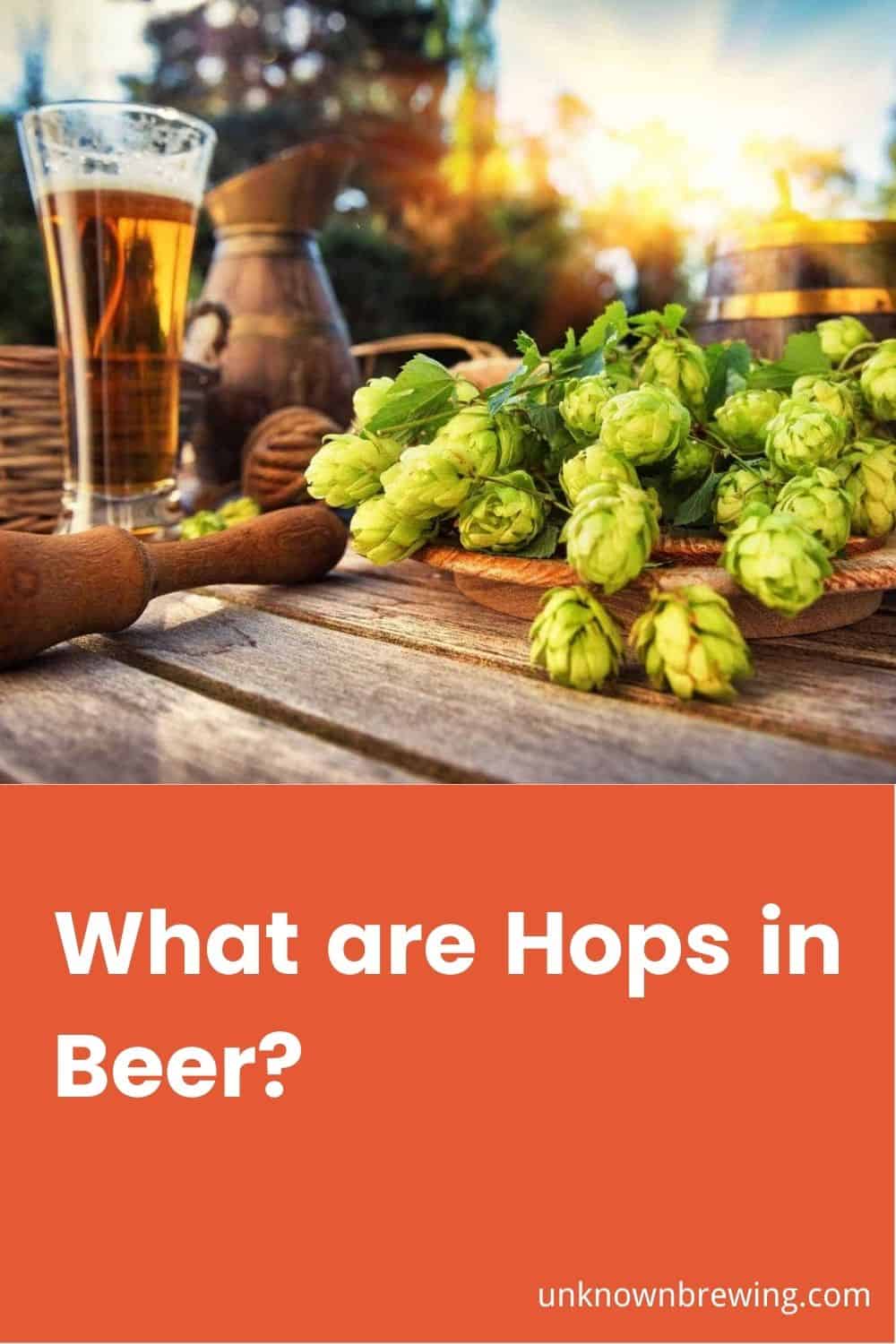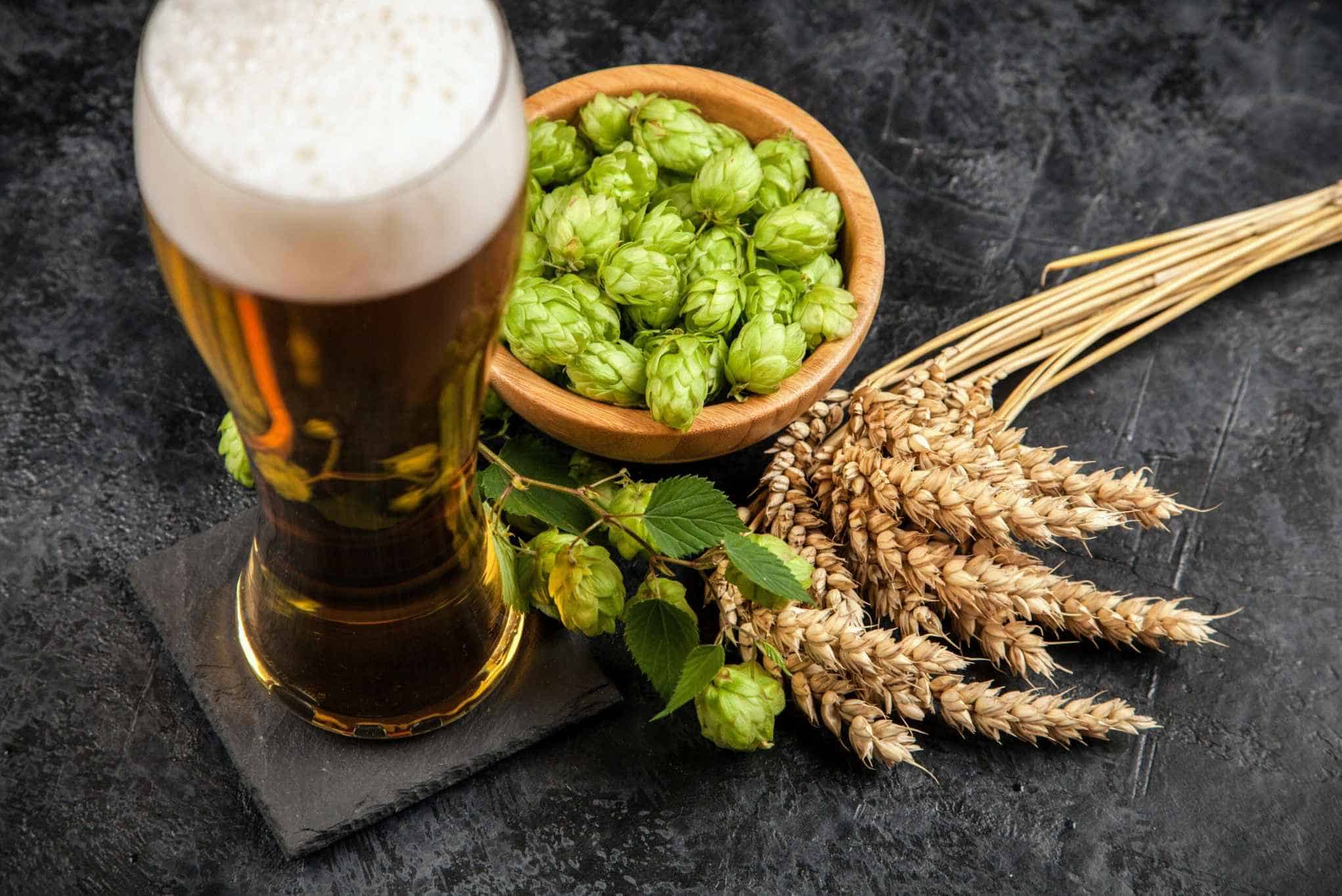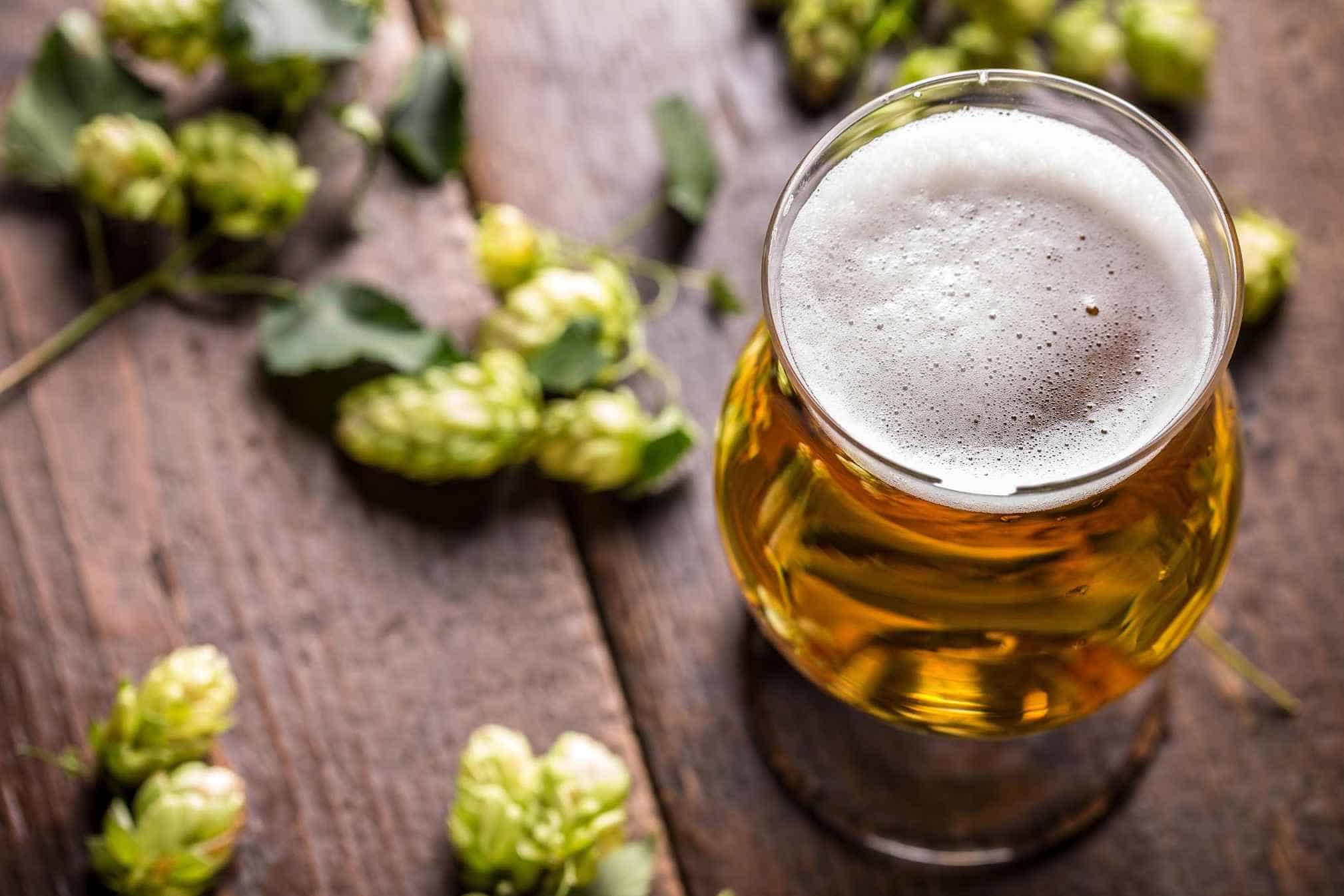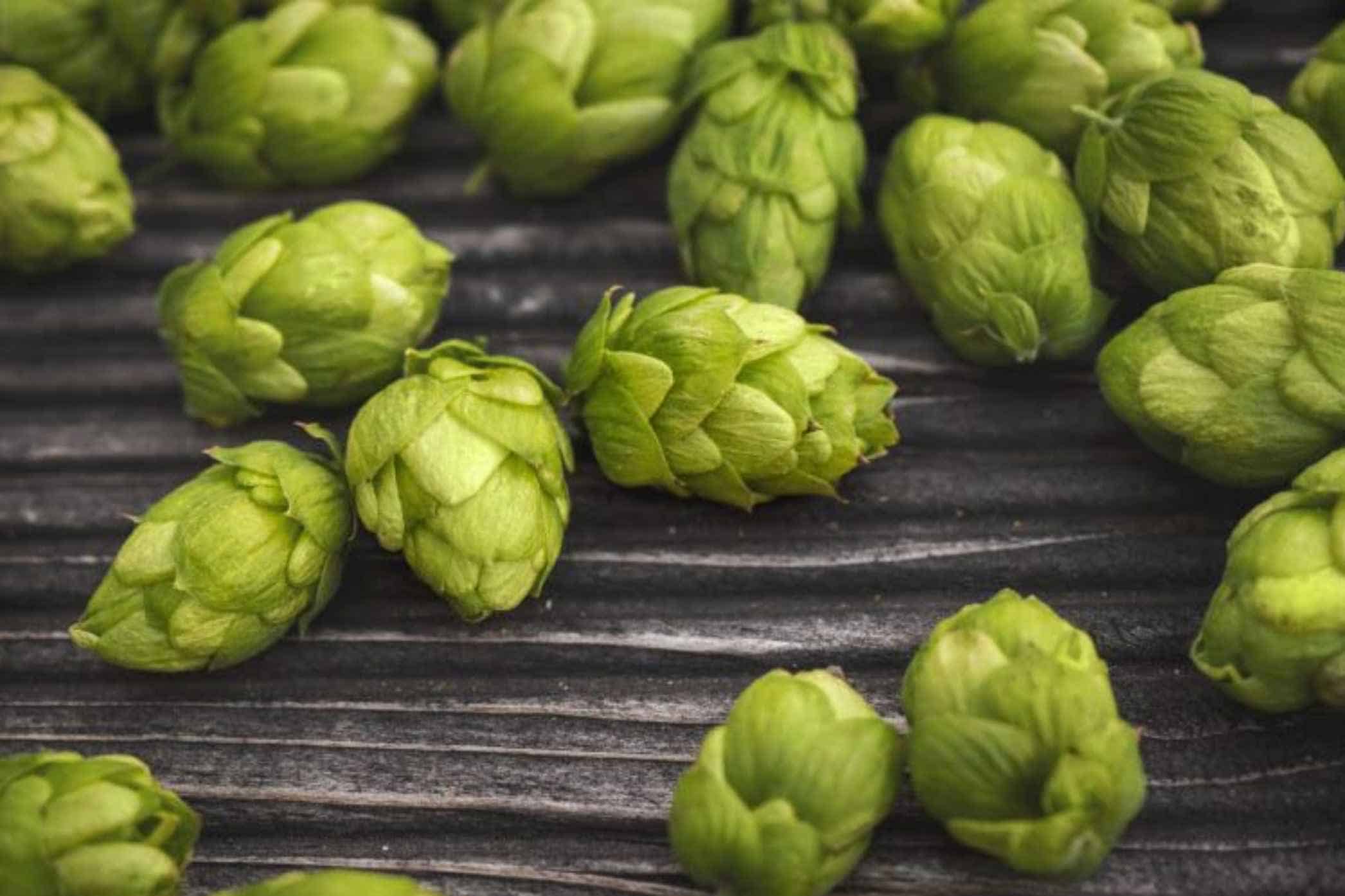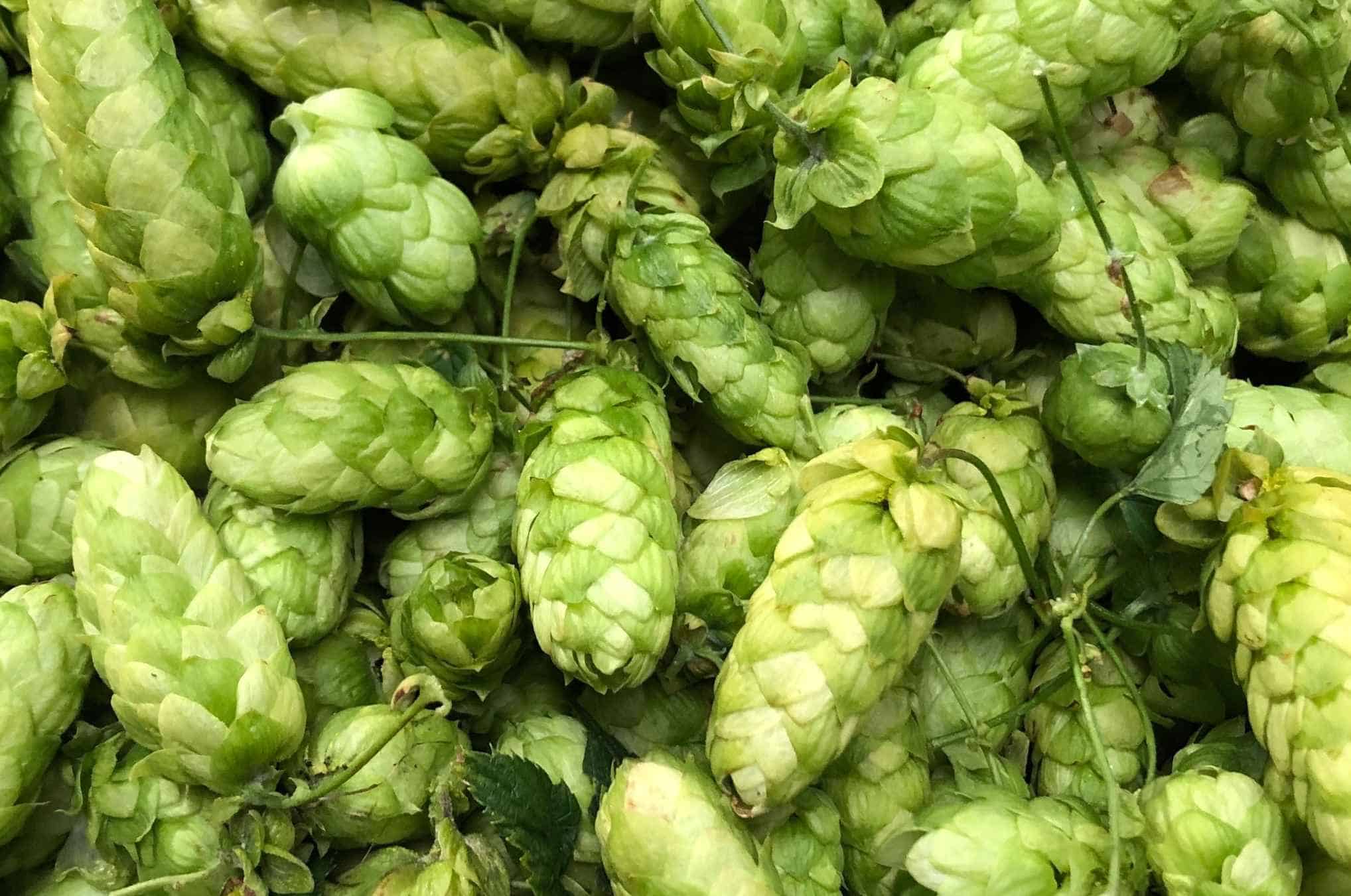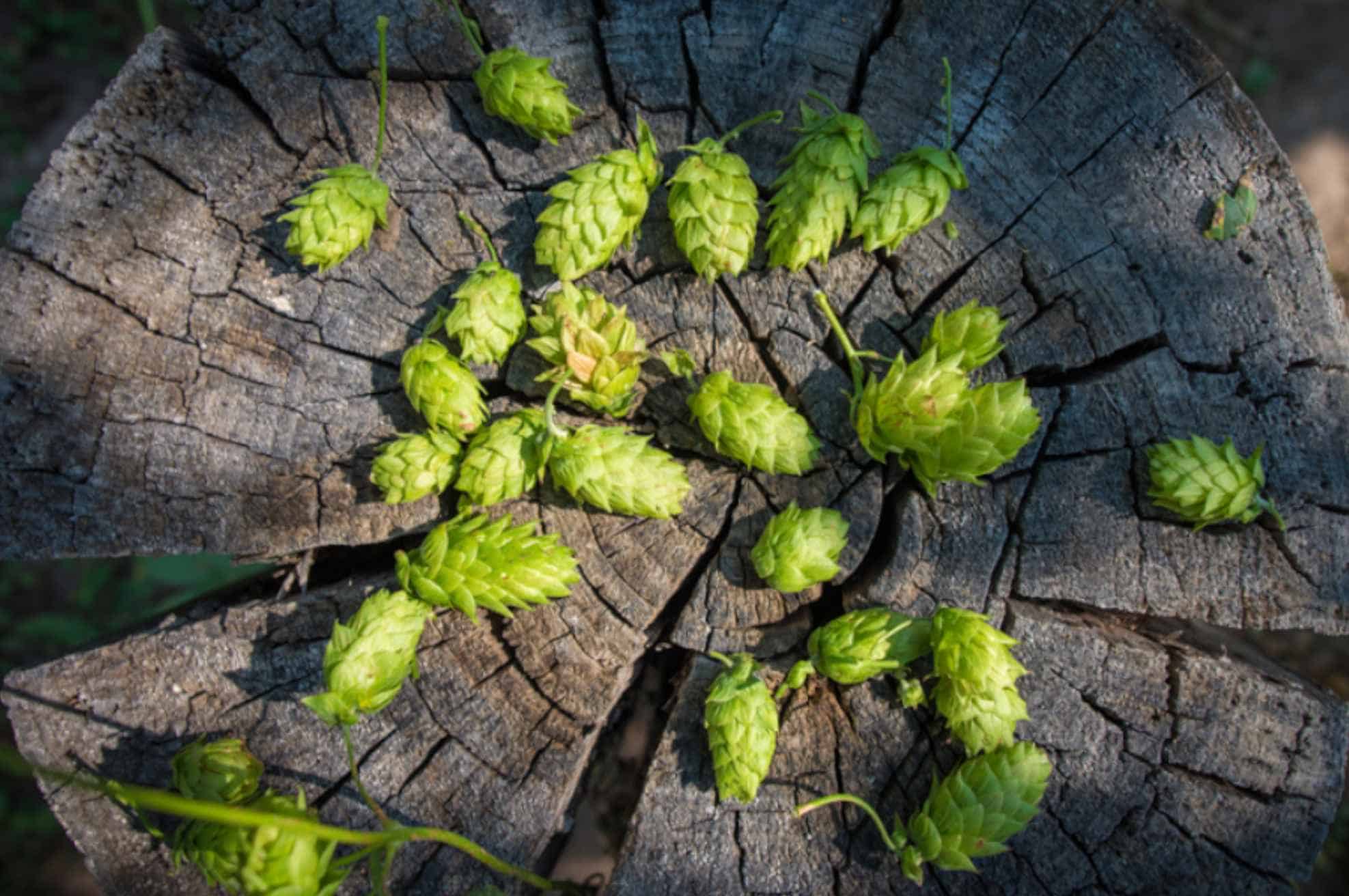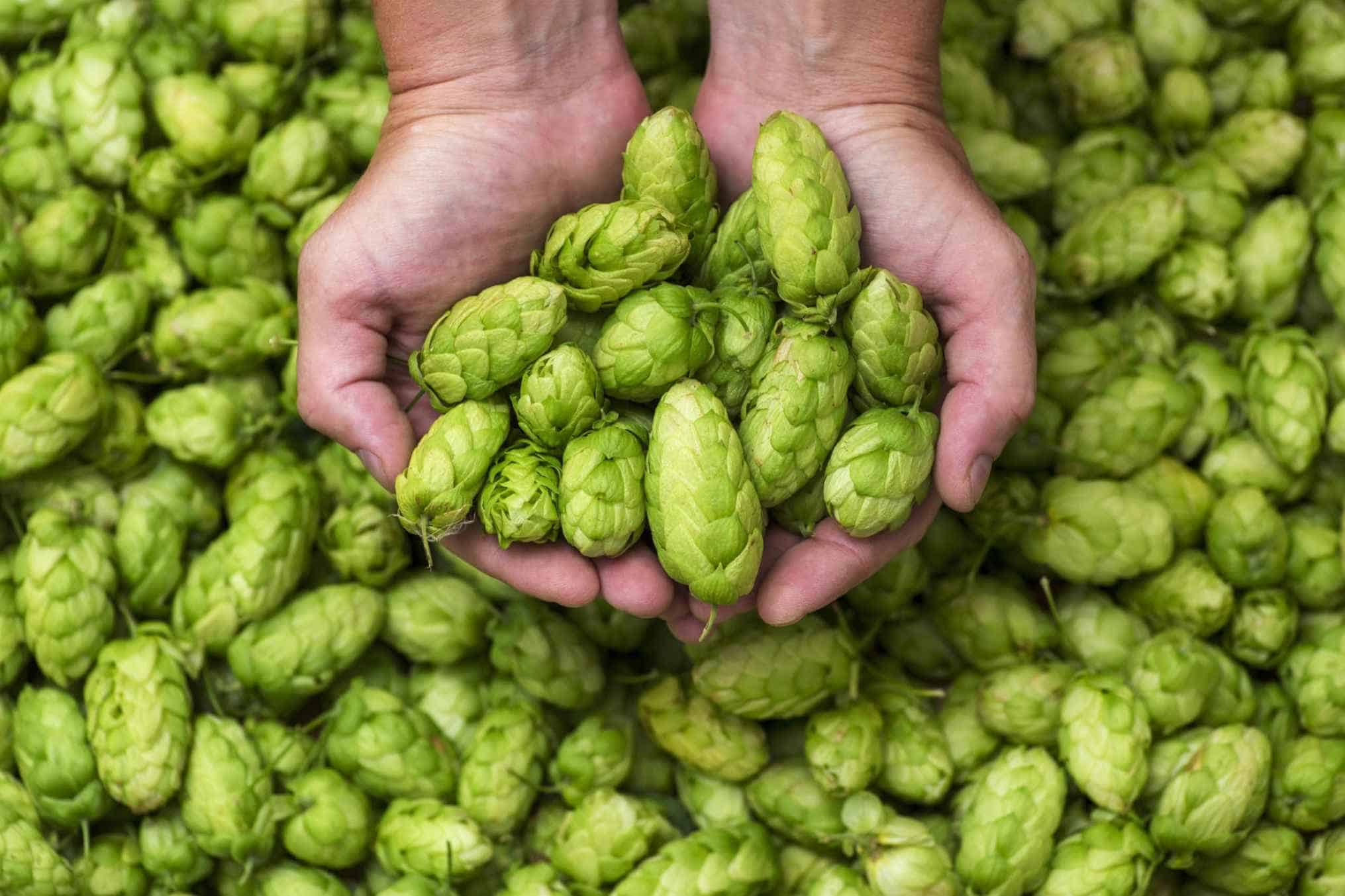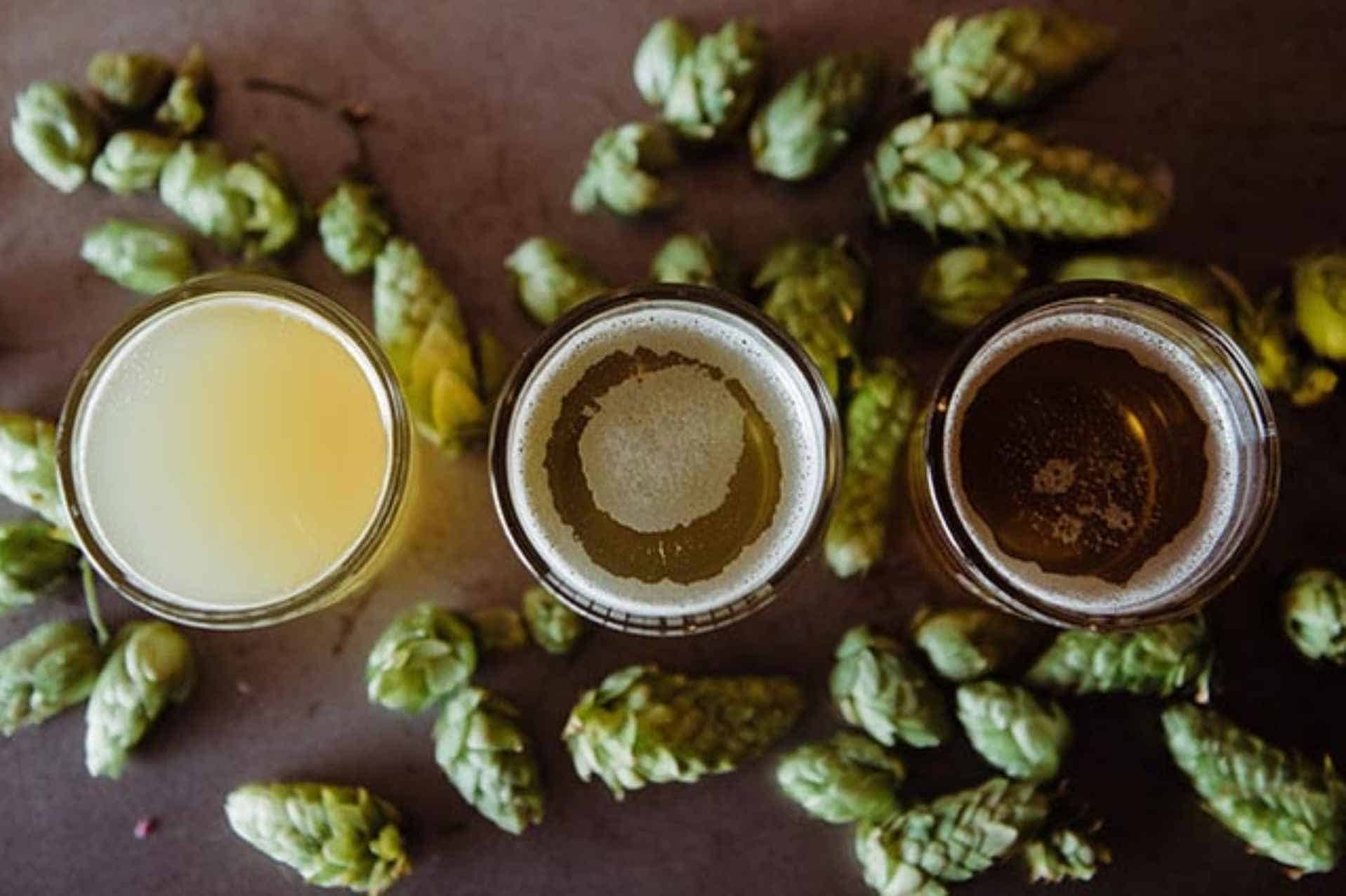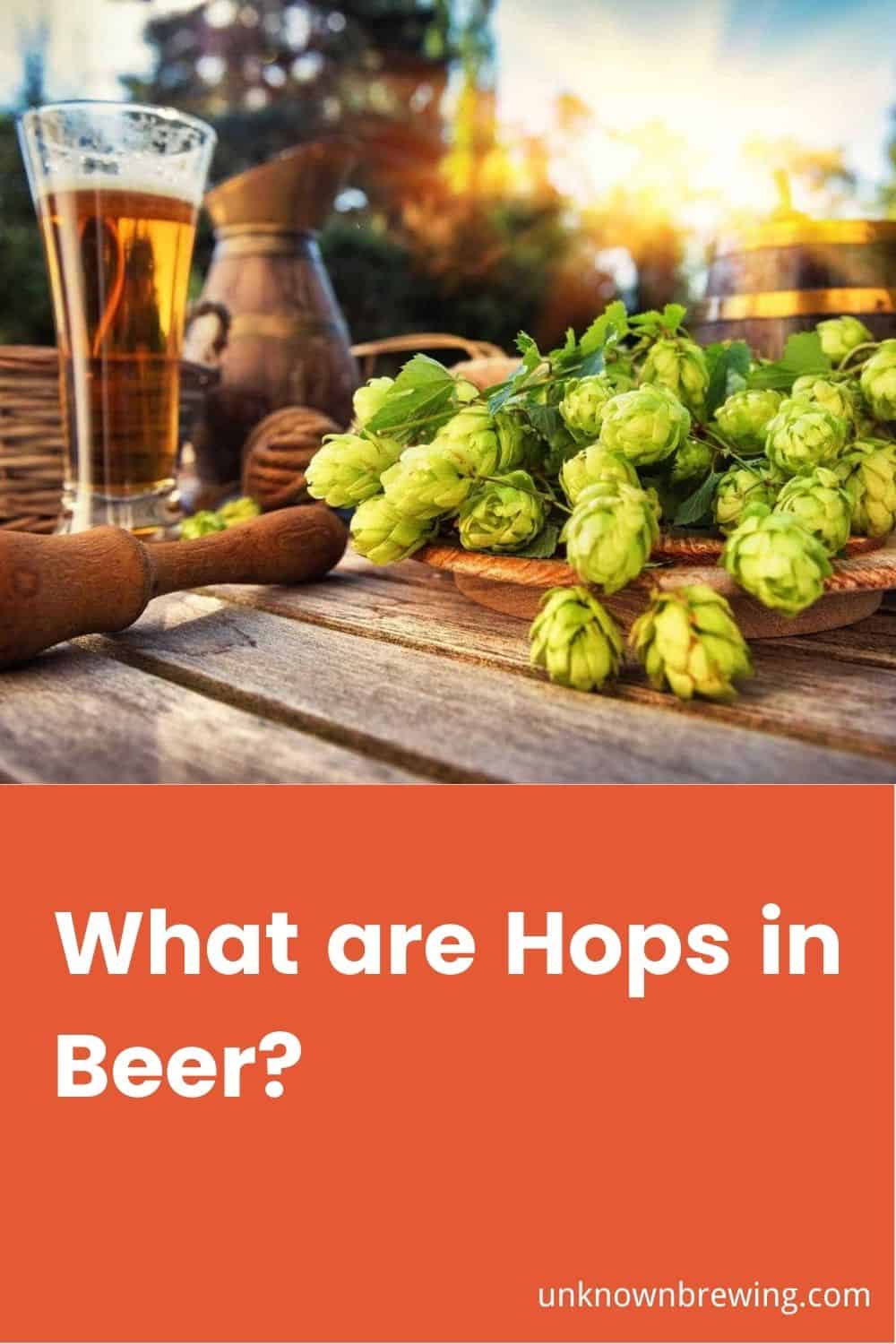Hops are essential to beer-making; however, many don’t know what hops are in beer. Well, you don’t have to ask that question anymore, as this ingredient overview will give you all you need to learn about hops in beer.
Hops: An Overview
Humulus Lupulus, otherwise known as common hop, is the plant in which hops grow. An acorn-like appearance and green color characterize hops. These seed cones or flowers are essential ingredients for brewing beer.
This herbaceous perennial plant is pretty much akin to vines. It will climb and thrive without much intervention, making it excellent for commercial production.
In ancient times, hops are not the primary herbs for brewing beer. Most beermakers use a slew of different herbs and spices to provide the best quality beer. This mix of other organic ingredients, such as burdock root, marigold, and dandelion or gruit, is used by ancient breweries to make their beer.
You can even do this in modern times. Try out this old beer recipe that does not requires hops at all. With that said, there are many reasons hops are now widely utilized in beer-making.
Breweries find hops to bring the most out of the drink. Most hops are added while the beer is still in the boiling process. It then releases the chemical compounds that trigger oil and mineral production.
You will learn more about the different varieties of hops and their various effects on your drink.
Why are Hops in Beer?
There are three main reasons: aroma, bitterness, and flavor. These three factors can make or break any beer you taste, so it’s essential if you want to have an excellent brew at hand.
Produce Better Aroma
Beer is known for its powerful aroma. However, hops add an intense citrus, herbal, and spicy smell to the beer. Besides the malt, hops bring out a more earthy and fruity flavor.
This smell is due to the humulenes present in the drink. This essential oil is the prime reason for the incredible aroma of hop-infused beer.
Depending on the type of hopping process you will do, hops can produce a strong or milder aroma. Hops can range from earthy and floral to herbal notes, depending on the type of hops in the process.
Improve Bitterness
The beer presents its bitter taste with every sip. Most don’t know that this bitter taste came from the hops in the blend.
This bitter taste is due to the alpha acids from the plant. These acids come from the oil that comes out while the hops are boiling. The longer the hops are on the boil, the more bitter they will taste.
When creating and fermenting beer, you can have different outcomes depending on how you utilize these hops—for example, adding the hops during the boiling process for a more potent aroma and bitter flavors.
However, adding the flower after boiling or late fermentation is an excellent answer if you want a milder hop bitterness.
Flavor
Although malt is the primary flavor of beer, hops also add an incredible mix of different enhancements. It can provide a potent blend of different flavors that improve your beer. Depending on the type of hops in your drink, you can have a fruity, earthy, or herbal blend.
With that, you know the three main reasons hops are added to the blend. The bitterness, flavor, and aroma of your favorite beers are all thanks o this wondrous seed cone.
Different Types of Hops
Noble Hops
Type of Hops | Alpha Acid | Beta Acid |
Spalt | 4–5% | 4–5% |
Tettnang | 3.5–5.5% | 3.5–5.5% |
Hallertau | 3.5–5.5% | 3–4% |
Žatec (Saaz) | 3.5–5.5% | 3–4.5% |
Noble hops are mainly hops cultivated in Europe, namely Germany and Czech. This variety of hops is what most breweries use. It offers a good balance of beta and alpha acids, making the beer more flavorful.
Other than their acids, noble hops are also a good source of humulene. This aromatic essential oil will make your beer more fragrant. It offers a blend of licorice, earthy, and floral twist to your drink.
This hop variety is perfect for an aromatic blend with lower bitterness.
English Hops
Although not as prevalent in modern times, these hops originating from Flanders used to be a natural preservative for older beer brews. It provides an earthy flavor with notes of floral and fruity twist.
These days, finding beers that use English hops as their primary brewing material is much more work. This scarcity is because it makes the beer much more delicate in process changes leading to different results.
American Hops
American hops are the fruits that give American IPA its distinct flavors. These bold, bitter, and aromatic hops are what most American breweries use to get their piney beer blends.
American hops are prominent in the market by volume, with over fifty varieties to choose from. It differs from favors, but one thing is sure: the blend will be aromatic and flavorful.
American hops are known for their citrussy, earthy flavor notes and intense aroma. The giant hops also produce more significant amounts of alpha acids, giving a more decisive kick to the beer.
European Hops
European hops are a wider variety of hops about those found in various places around Europe. Unlike their American counterpart, these hops are generally more aromatic than bitter.
It provides a good sense of essential oils without alpha acids. It’s best for milder blends as the perfume is infused without bitterness.
Dry Hopping vs. Wet Hopping: What is the Difference?
When it comes to utilizing hops in your blend, there are two processes you can choose from— dry hopping and wet hopping. You can select the best hopping technique for your beer depending on your desired outcomes.
Dry Hopping
Dry hopping pertains to the process that does not include extracting oil from the hops. This process then leads to a higher amount of fragrance and aroma. The process is commonly made for lighter beer blends such as Porter and Pale Ale.
When it comes to dry hopping, the hops are added much later in the fermentation. They do not infuse the beer with oil in the boiling process. The limit in oil extraction minimizes the bitterness from the hops.
With this method, you can use dry hops or fresh hops, depending on your preference.
Wet Hopping
Wet hopping includes the boiling of the hops along with the beer. The heat leads to a more bitter kick and heightened beer flavor from the hops.
When the hops boil, they release alpha acids, making the beer more aromatic and bitter. The wet hopping method utilizes this and uses the brewing process of the beer to make it more flavorful.
This method needs fresh hops. The freshness of the hops might come as a challenge as these flowers are known for spoiling fast. It’s best to incorporate them while freshly harvested from the vines.
The wet hopping method is best for more potent blends as they offer a pleasant bitterness from the hops. The aroma and amount of oil are also heightened with this process.
Many processes combine these two; some even infuse dried or fresh hops at the later stages of beer brewing. Many breweries utilize these plants in different yet wonderful ways you ought to try out.
Whether dry or wet hopping, you can ensure a nice beer blend within every glass infused with hops.
What is the Amount of Hops in Beer?
Now that we know the effects and the overview of hops, let’s get into the different beer types and the number of hops in their blend.
Beer Style | Amount of Hops (per 2,000oz keg) |
Imperial IPA | 3.8 lb |
Imperial Stout | 1.73 lb |
Barleywine | 1.57 lb |
IPA | 1 lb |
Pale Ale | 0.56 lb |
Porter | 0.39 lb |
Depending on your taste, different beers can suit other preferences. Beers with lower hops tend to be less bitter and have lighter flavors. However, higher hops can also mean high levels of aromatics leading to solid perfume.
Pale ales and Porter are among the most popular beer with lighter hops. It leads to a mildly bitter flavor and a lower ABV percentage. However, most blends tend to lean into malt flavor rather than hops.
Most Imperial blends, on the other hand, have a higher number of hops leading to an intense, bitter kick. It also means a stronger smell and flavor from the hops.
On average, a pound of hops is present per keg of beer. The process is more critical to the outcome of the beer rather than the amount of hops present.
What type of beer, along with the hops in the blend, is purely up to preference. With this chart and information, you can choose the right beer blend.
In Summary
With that, we conclude the answers to the question—What are hops in beer? Hops are excellent for beer in so many ways. It can improve the taste, aroma, and bitterness of the drink. With these deeper explorations of the plant, we hope you know everything you want about hops.

As a homebrewer, Michael would get frustrated about the lack of brewing information on the internet. After hundreds of gallons of spoilt batches, Micheal had enough. And he founded Unknown Brewing as a resource for homebrewers.

